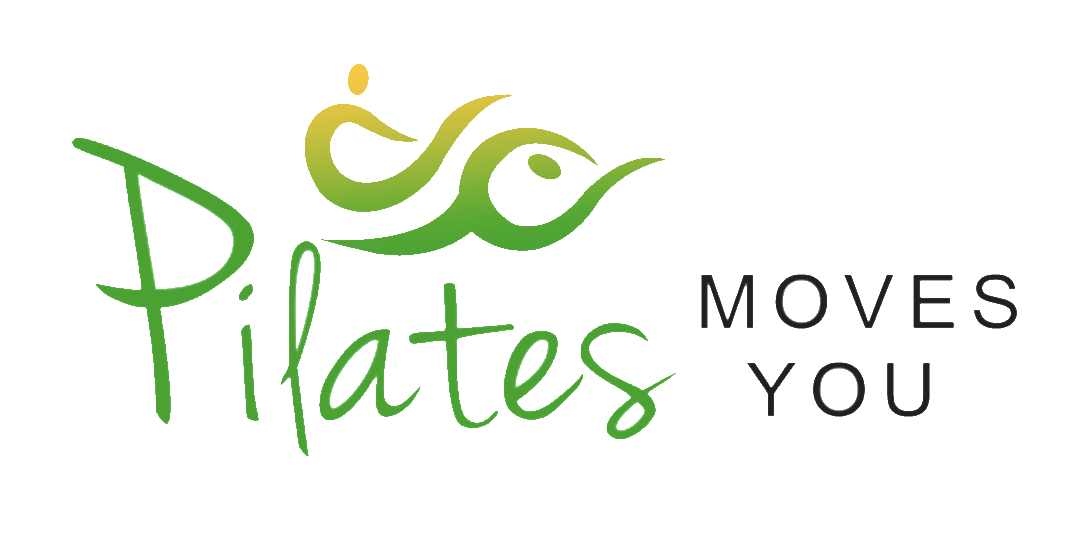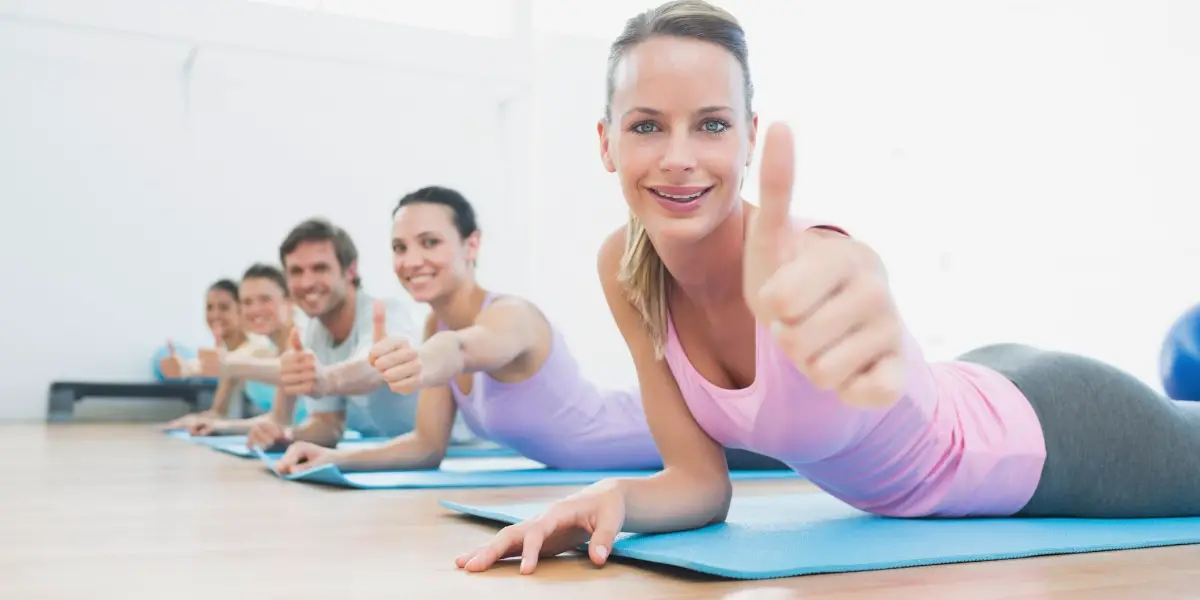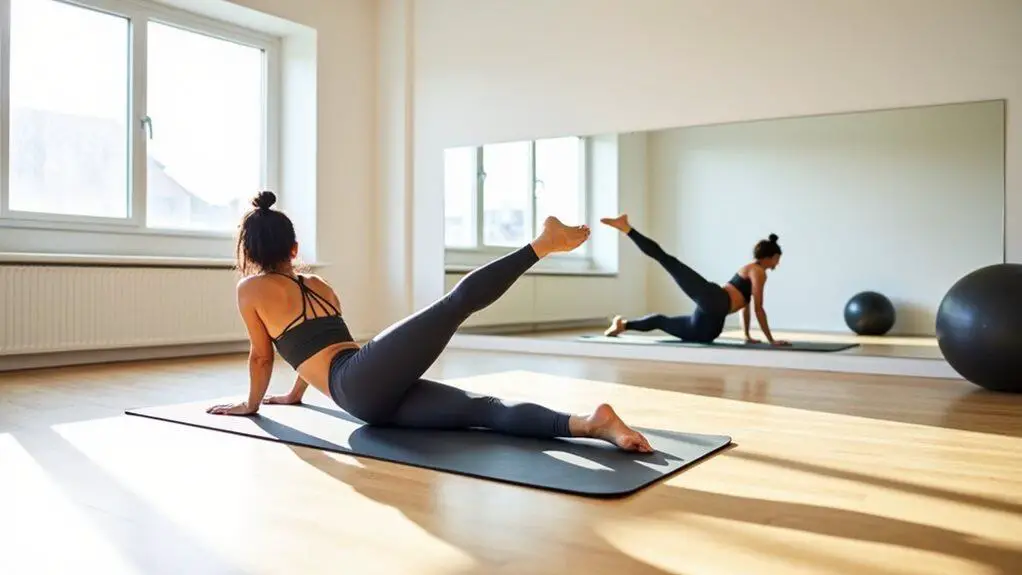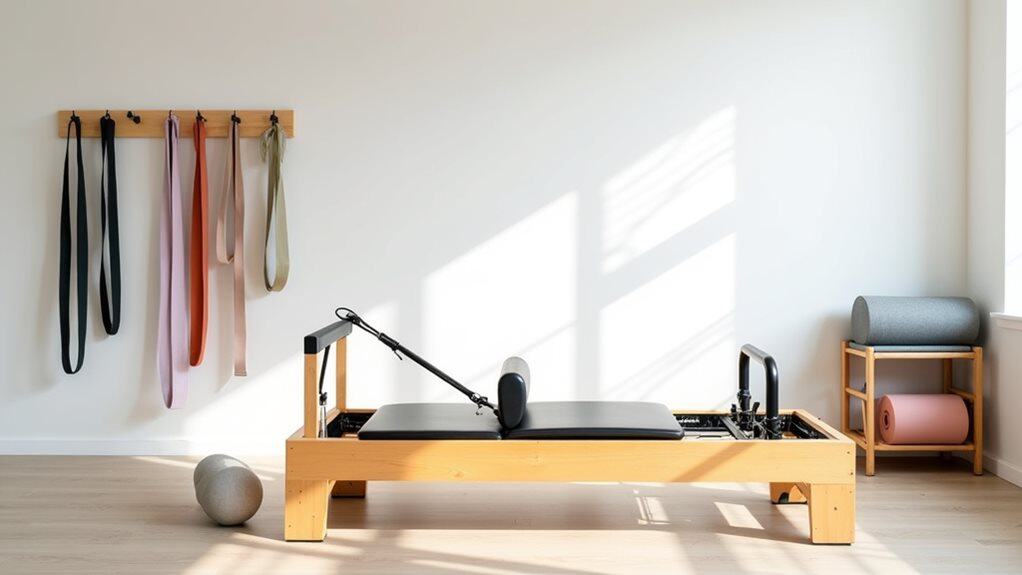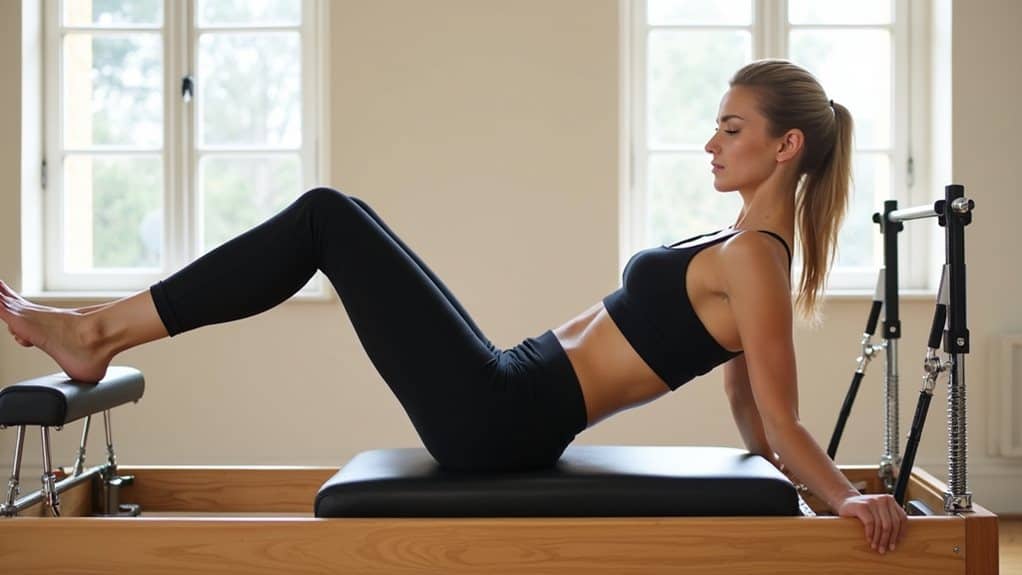Whether you’re a seasoned pro or just getting into Pilates, it’s always good to have some reassurance that you’re doing things right! So, what’s a reliable way to tell?
Here are signs you’re doing Pilates correctly:
- Low rep count
- Diverse movements
- High concentration
- Prioritizing your needs (not preferences)
- Correct breathing
- No bracing
- Building core strength
- Doing ab exercises safely
- Proper alignment and posture
- Moving at your own pace
- No planks
- Slow movements
- Proper use of your core
It seems easy to get with the group and follow the Pilates instructor’s lead like most other physical activities. But what if you’re not feeling the exercises where you should? Keep reading to learn more about the above signs that indicate whether your sessions are correct while pointing out what you need to fix.
1. Low Rep Count
Pilates is a carefully designed method of physical fitness that stands on well-placed pillars of concentration, breathing, postural awareness, and flexibility. Even the slightest mistakes that keep sneaking into your Pilates sessions can compromise one or more of these principles. That’s why it’s vital to reassure yourself that you’re doing Pilates correctly.
If you don’t do too many repetitions of each exercise in your Pilates session, chances are you’re doing it right. That’s because, unlike weight training, Pilates doesn’t aim to grow any particular muscle group. It’s all about invigorating the body and enhancing its flexibility, strength, and functionality.
You don’t need to repeat movements to the point of failure to achieve these goals. Rather, the Pilates method cycles through many movements during each session to engage your concentration and mind-body connection while also developing an aesthetic musculature.
Generally, 5-8 repetitions of each movement are enough. That doesn’t mean you’ll be exercising less — you’ll still be building muscle. This simply swaps the “repeat till failure” method with a more efficient and balanced session.
I’ve found that keeps me, and my clients, a lot more interested and engaged in our workout routine, and if you make an activity interesting you’re far more likely to achieve your fitness goals.
So, if that sounds like your last Pilates session, that’s a good sign.
2. Diverse Movements
As I mentioned, a typical Pilates class cycles through many exercises in each session — even though the rep count is pretty low. This stimulates your entire body and activates all muscle groups through a diverse set of movements.
Ideally, no particular exercise should feel too demanding, but the session should get progressively more exhausting towards the end. So, if your session involves everything between backbends, side-bends, rotations, and forward flexes, your instructor knows what they’re doing!
3. High Concentration
A high concentration level is a crucial principle of Pilates. Therefore, if you focus on maintaining it throughout your sessions, you’re doing it right.
According to Joseph Pilates, “concentration assists you to stay safe during your Pilates sessions by executing each exercise with better technique”
Ensure that whatever Pilates guidance you follow respects the original principles of this fitness method. Whether it’s an online expert on YouTube, your local Pilates studio, or an in-person coach, their teachings should be in-line with the classical roots of Pilates.
Joseph Pilates, its inventor, spent half a century perfecting his technique. It was built around meticulous principles of concentration, breathing, postural awareness, and flexibility. If your instructor emphasizes these regularly, you’re in good hands.
Concentration helps you become more mindfully aware of your body, enabling you to perform precise movements. This way, your muscles can respond more effectively to the demands of each exercise.
Pilates advises practitioners to try and concentrate on performing proper movements every time, since incorrect movements would mean losing all essential benefits available.
If you’re a beginner, you shouldn’t beat yourself up over not being able to concentrate right off the bat. It takes a while to get good at it, but you can see you get mental, as well as physical, benefit.
So, as long as you’re trying to be more focused during each session, you’re still doing it right.
4. Prioritizing Your Needs (not Preferences)
Many people make the mistake of sticking to movements they prefer doing rather than the ones that are good for them or challenge them.
Often, the fun and easy exercises will benefit you the least. That’s not to say that each movement should make you moan and grunt; just don’t skimp out on the ones that do. This is because Pilates is a highly customizable fitness method where different movements can be more or less valuable for different people.
For instance, people whose jobs entail lots of sitting will most likely have developed rounded shoulders over the years, making curl-ups fruitless.
Instead, they ought to be doing movements like back extensions, reverse shoulder stretches, and prone I, T, Y postures to correct their slouching posture. These exercises will be more uncomfortable for such people, but they’ll also be the most valuable ones for their particular needs.
Hence, if you prioritize the movements you need instead of the ones you want, you’re doing Pilates correctly and will gain a better quality of life.
5. Correct Breathing
As I mentioned above, breathing is one of the fundamental principles of Pilates, alongside concentration, postural awareness, and flexibility. The “Pilates Breathing Technique” is specifically meant to help with muscle activations, movements, and mobility for each exercise.
To properly perform Pilates breathing:
- Inhale through your nose. Direct the breath to your chest, allowing the ribs to expand laterally.
- Exhale through your mouth. You’ll notice the rib cage moving inwards as you let all the air out. Practice exhaling through your mouth forcefully (as if you’re blowing out a candle).
During your Pilates class, it’s also normal to practice diaphragmatic breathing (or big belly breathing), which involves breathing into your stomach. It’s generally structured into the beginning or end of Pilates sessions since it’s an effective way to relax the body and calm your mind.
So, if your instructor talks about these breathing patterns and emphasizes them during your exercises, that’s a great sign.
6. No Bracing
This one is linked to the breathing patterns I just covered. It’s basically a litmus test to see if you’re breathing right during your Pilates session.
The breathing pattern I talked about above involving the lateral expansion of your ribs is called lateral thoracic breathing. It’s the main breathing style in Pilates and ensures that you’re not ‘bracing’ through any of the exercises.
Bracing essentially means firming up any of the muscles in your core area, which is usually associated with holding your breath. Remember that you should never brace or hold your breath during a Pilates session, regardless of what movement or exercise you’re performing. Lateral thoracic breathing prevents just that and allows you to use your core muscles properly.
7. Building Core Strength
As a personal trainer, one of the main goals I have for each client is to enhance the body’s overall strength and functionality. And building core strength is essential for that. So if your exercise routines consistently hit your deep back and stomach muscles (as well as the muscles on your limbs), you’re on the right track!
Core strength pilates exercises include the crisscross, side bend preparation, leg lifts, side leg lifts, bird dog, swan dive, hovers, etc.
These are all relatively strenuous exercises, and you won’t necessarily like the abdominal burn that accompany them. However, they’re vital as they increase your core strength. So, the next time your instructor asks you to do them, don’t whine. Appreciate the fact that they’re making you do Pilates right.
Try out my 20 minute core workout:
Revisit point #4 for further reference on doing exercises you’re not a fan of.
8. Doing Ab Exercises Safely
Speaking of exercises that make your abs burn, another sign of doing Pilates right is prioritizing safety during abdominal exercises. Something as simple as a curl up (without any weights involved) can hurt your neck if you don’t follow the right guidance.
Some instructors urge you to perform hands-free curl-ups to maximize the stress on your abdominal muscles. However, for beginners, the abdominal muscles might not be strong enough to lift their upper body off the ground, which sends the strain directly to their neck.
That’s why it’s essential to support your neck with your hands and try your best not to pull on the head while you perform curl-ups. That way, your stomach does all the heavy lifting (literally) without compromising the safety of your neck.
A lot of neck problems can also arise from flinging your body back to the ground on your way back from a curl-up. Therefore, make sure you go back slowly, allowing your stomach to control your weight throughout the movement.
As your abs get bigger and stronger, you can slowly transition into hands-free curl-ups for better ab engagement.
9. Proper Alignment and Posture
Postural awareness is another fundamental principle of Pilates. It involves completely controlling every part of your body throughout each movement.
Correct alignment entails precise positioning of your hands, feet, and bending angles. It also means properly controlling your three significant body weights; the pelvis, rib cage, and the head.
If you deliberately focus on being aware of your alignment during each move, or your instructor emphasizes maintaining the proper posture all the way through, you’re probably nailing Pilates!
10. Moving at Your Own Pace
Too many people ruin their Pilates experience by trying to keep up with others in the studio, increasing their risk of injury. If you don’t catch yourself doing that often (preferably not at all), you’ve got the right mindset.
It’s essential to keep your main goals in mind during each session. This way, you can continue to become stronger, more flexible, and fitter while still maintaining a comfortable pace.
Competing with others makes you wear out quicker, destroys your concentration (and I’ve already stressed how important that is), and also puts you at risk of sustaining severe injuries.
11. No Planks
Contrary to popular belief, planks have nothing to do with Pilates. In fact, Pilates has no stationary exercises — it’s all about movement. So, whether it’s the plank or a wall-sit, if your instructor makes you “hold” a position, you can instantly tell that it’s not part of Pilates.
Having said that, the plank has plenty of benefits of its own and has been adopted and incorporated by instructors worldwide. For example, I will often ask students to hold a plank position briefly before transitioning into a pike.
Anyone wishing to maintain decent core strength should regularly get some planks in as part of their daily routine.
Pilates has many other effective exercises to build core strength (revisit point #7), but you’ll notice that they all involve movement and repetitions.
So, don’t be surprised if your instructor sticks to movement exercises to strengthen your core instead of making you plank, or incorporates the plank as a small part of the workout routine.
12. Slow Movements
Another sign of doing Pilates correctly is moving slowly in each repetition. Going fast might make you feel like you’re making it more challenging for yourself, but it’s quite the opposite in reality. The slower you move through your exercises and movements, the more difficult it gets.
For instance, a slower pace during leg raises means the abdominal muscles need to control the weight longer as your legs go up and down. It makes the exercise tougher on the targeted muscles and hence improves results.
So, if your instructor keeps reminding you to slow down each time you get ahead of yourself (especially during the negative phase of a repetition), hold onto them because they’re right!
13. Proper Use of Your Core
Many people make the mistake of preemptively engaging their core muscles (such as the pelvic floor) throughout their Pilates movement. Instead, you should be using your muscles as and when they’re needed — no more, no less.
As such, if you’re using your muscles reactively instead of exaggerating the flex before you even enter the position, you’re doing it right!
You shouldn’t engage your muscles the entire time while doing a movement. They should only come into play to control the weight and maintain your alignment. This mistake is often linked to ‘bracing’ and keeping your core tightened up all the way through.
The next time you’re just about to perform curl-ups, don’t flex your abs preemptively. Instead, try to do the exercise naturally with the correct form, and you’ll feel the muscles kick in as and when they’re needed, i.e. using your muscles reactively. If that sounds anything like you, keep it up!
Final thought
I’ve made my practice one of my daily activities and I can’t stress enough how much it has improved my quality of life.
However, you will only see benefits such as increased range of motion and muscle tone if you do it correctly, and so I would advise any beginner to gain professional instruction, either as a private client or part of a fitness class, in order to gain the correct understanding of the movements.
Sources
